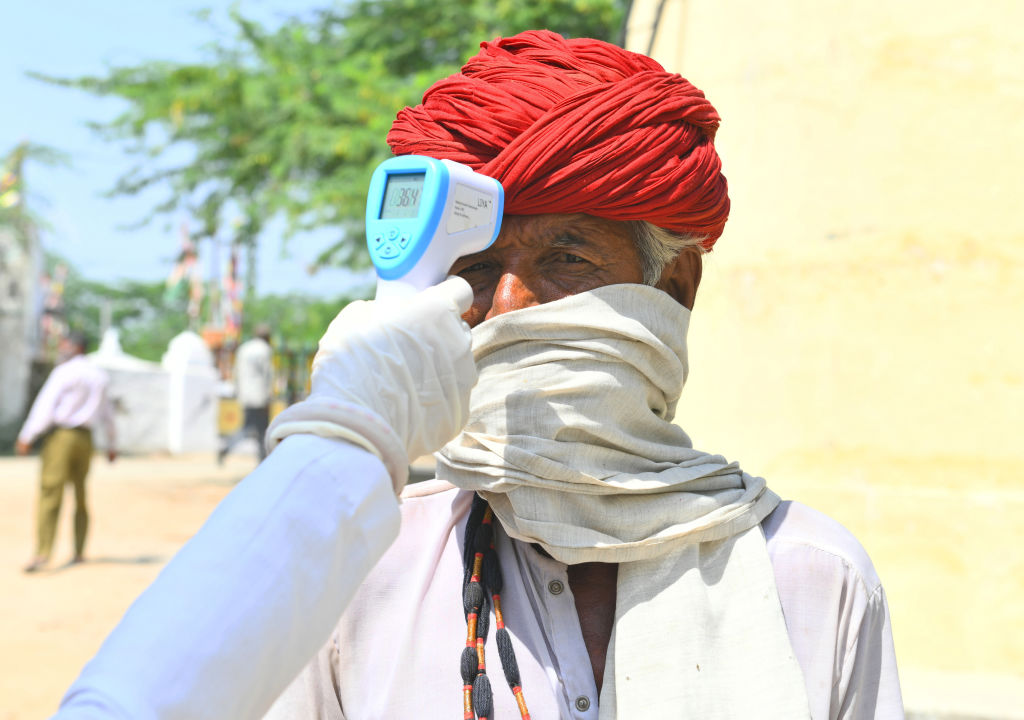
PHOTO: Getty
Coronavirus has a racist tendency or is it a lack of access to health facility or reluctance to get tests done, that shows that South Asians and other ethnic minorities in England are more likely to test positive, get hospitalized or die due to Covid-19 virus as pointed out by a Lancetstudy titled Ethnic differences in SARS-CoV-2 infection and COVID-19-related hospitalisation, intensive care unit admission, and death in 17 million adults in England: an observational cohort study using the OpenSAFELY platform.
Lancet points that ethnic differences do matter. The study conducted in the United Kingdom points that the South Asian communities are not just more likely to get infected by Covid-19, they are also more likely to become severely ill, even fatality risks are higher than any other minority ethnic community during the second wave of the pandemic.
It’s a big study involving a total of 23 600 617 individuals, 17 288 532 of them are adults aged 18 years or above; 10 877 978 (62·9%) people of White ethnicity, 1 025 319 (5·9%) of South Asian ethnicity, 340 912 (2·0%) of Black ethnicity, 320 788 (1·9%) of other ethnicities, 170 484 (1·0%) of mixed ethnicity, and 4 553 051 (26·3%) of unknown ethnicity. The National Health Service (NHS), England is the data controller for the study.
In general, it’s true that minority ethnic groups were found to be at a higher risk of getting infected by the virus, getting hospitalised, being under intensive care, and eventually dying when compared to the white community—the report pointed out. This could also be due to access to health facilities that needs to be investigated.
For instance, the risk of hospitalization relative to white population, after accounting for all measured explanatory factors, the risk of ICU admission was around 2-3 times in the four broad minority ethnic groups, with South Asian it was 2:18 [1:92–2:48]—or more than twice. While the risk of Covid-19-related death was increased by 22–51% in the four broad minority ethnic groups relative to the White group, with the South Asian group 1·26 [1·15–1·37]—on an average 26% higher compared to the white population.
Testing: all four of the broad minority ethnic groups were less likely to be tested than the White group, and this pattern was also seen in all minority ethnic subcategories relative to the White British subcategory, with the exception of the Pakistani group.
Further, the South Asian group remained at higher risk of testing positive (adjusted HR 1:32 [95% CI 1:31–1:33]) approximately 30% higher, than the White group, and the risks of Covid-19-related hospitalisation (1:89 [1:79–2:00]) 80% higher, ICU admission (2:68 [2:39–3:01]), nearly two and half times.
Second wave is more severe than the first (1:87 [1:68–2·07]), nearly 90% relatively greater in magnitude.
The results were fairly clear. In a population-based cohort study of 17 million adults in England, Lancet found that, although ethnic differences in testing were small, minority ethnic groups were at increased risk of testing positive for both SARS-CoV-2 and of Covid-19-related hospitalisation, ICU admission, and death.
Not that the virus has a racial bias but the Lancet study represents the most comprehensive examination of ethnic inequalities in England during the Covid-19 pandemic in 2020. The study suggests that the White populations are tested more frequently with mild or asymptomatic disease, or that minority ethnic groups get tested at more severe stages of the disease. These disparities might relate to a lack of access to testing sites, poorer health literacy, lack of tailored and accessible health communications, or differences in testing-related behaviours. And one of the reasons for it, there is emerging evidence to suggest, individuals might avoid seeking a test for fear of losing income or employment if required to quarantine after testing positive.
Lesson for India: The study has implications for India’s situation, where testing facilities are limited, and access of the poor is further restricted, and so a huge chunk of the population remains untested. And the poor, and the working class, avoid testing fearing loss of livelihood—a phenomenon that’s global. It’s safe to conclude that in the case of India this gap would be greater. Though the number of cases and deaths are already staggering, we in all likelihood are seeing just the tip of the iceberg.
The four cases are linked to the land-for-jobs and IRCTC scam, which are being probed…
This was followed by the Delhi Development Authority (DDA), which addressed 4,804 of the 5,197…
These local stores stock thicker jackets, practical sweaters, and everyday layers that are designed for…
Veer Ahlawat’s final-round 67 sealed a three-shot win at the Rs 1 crore CIDCO Open…
OnePlus has launched the 15R smartphone and Pad Go 2 tablet in India, with prices…
Nearly 2,800 Delhi vehicles denied fuel on first day of 'No PUC, No Fuel' drive…